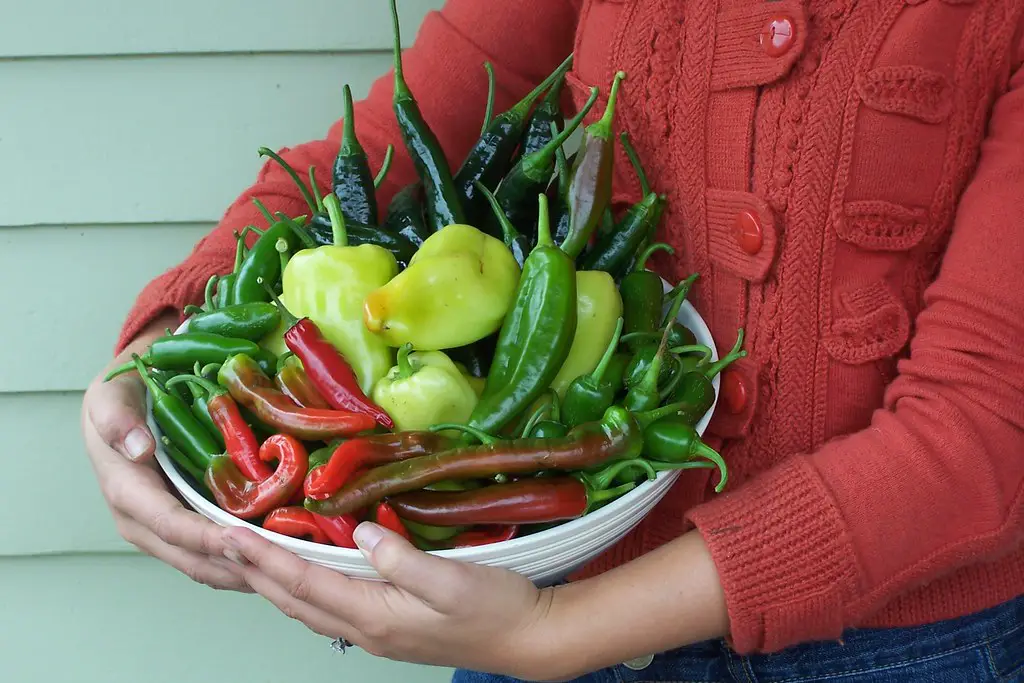Growing peppers, whether bell, jalapeño, or chili varieties, can be an incredibly rewarding experience. Their vibrant colors, distinct flavors, and nutritional benefits make them a staple in many gardens worldwide. However, one of the most critical factors in successfully cultivating peppers is ensuring they have enough space to grow. Providing the right amount of space allows pepper plants to thrive, maximizing their health, yield, and resistance to pests and diseases. This article will explore how much space peppers need to grow and provide detailed guidelines to help your garden flourish.
Understanding Pepper Plant Growth Habits
Peppers belong to the Solanaceae family, sharing similarities with tomatoes and eggplants. They are typically bushy plants that can range from compact dwarf varieties to larger, sprawling types. Understanding the growth habits of your chosen pepper variety is essential to determine the appropriate spacing.
Compact Varieties: These are ideal for container gardening or small spaces. Examples include mini bell peppers and patio hybrids, which generally grow up to 1-2 feet tall.
Standard Varieties: These include bell peppers, cayenne, and jalapeños, which typically reach heights of 2-3 feet.
Large Varieties: Some chili peppers, such as habaneros or certain heirlooms, can grow taller and bushier, requiring additional space.
Why Proper Spacing Matters
Providing adequate space for pepper plants has several benefits:
Better Air Circulation: Proper spacing improves airflow around plants, reducing the risk of fungal diseases such as powdery mildew and blight.
Optimal Sunlight Exposure: Crowded plants can shade each other, limiting their access to sunlight, which is essential for photosynthesis and fruit production.
Nutrient Access: Pepper plants require nutrients like nitrogen, potassium, and phosphorus to thrive. Overcrowding can lead to competition for these resources, stunting growth and reducing yields.
Ease of Maintenance: Well-spaced plants are easier to water, prune, and harvest.
General Spacing Guidelines for Pepper Plants
The amount of space needed depends on the specific pepper variety, the gardening method used, and the growing conditions. Below are some general guidelines:
In-Ground Gardens
Standard Varieties: Space plants 18-24 inches apart in rows that are 24-36 inches apart. This spacing accommodates their bushy growth habit while ensuring good airflow.
Compact Varieties: These can be planted closer together, with 12-18 inches between plants and 18-24 inches between rows.
Large Varieties: Allow at least 24-36 inches between plants and 36-48 inches between rows for adequate room.
Raised Beds
Raised beds often allow for more intensive planting due to their nutrient-rich soil and efficient drainage. However, you should still consider spacing:
Space standard varieties 12-18 inches apart in raised beds.
For compact varieties, 8-12 inches between plants may suffice.
Large varieties may still need 18-24 inches of spacing.
Container Gardening
Container gardening is an excellent option for growing peppers in small spaces. Ensure each plant has its container for optimal growth:
Use a container with a diameter of at least 12 inches for compact varieties.
For standard and large varieties, a 3-5 gallon pot is ideal.
Ensure proper drainage and high-quality potting soil to support healthy growth.
Spacing Considerations Based on Growth Stage
Pepper plants require different amounts of space at various growth stages:
Seedlings: When starting seeds indoors, plant them 1-2 inches apart in seed trays or starter pots. Once seedlings develop their first true leaves, thin them to the strongest plant.
Transplanting: When transplanting into the garden or larger containers, follow the spacing guidelines mentioned above.
Companion Planting and Spacing
Companion planting can enhance the health and yield of your pepper plants. However, it’s crucial to consider spacing:
Compatible Companions: Basil, marigolds, onions, and carrots can be planted nearby but not so close that they encroach on the peppers’ space.
Incompatible Plants: Avoid planting peppers too close to fennel or kohlrabi, as these can hinder their growth.
Maximizing Space in Small Gardens
If you’re working with limited space, there are techniques to maximize your pepper yield:
Vertical Gardening: Use stakes, cages, or trellises to support pepper plants and encourage upward growth.
Square Foot Gardening: Plant one pepper plant per square foot for compact varieties or 1.5-2 square feet for larger types.
Interplanting: Grow smaller crops like radishes or lettuce between pepper plants. These mature quickly and can be harvested before the peppers need the space.
Common Spacing Mistakes and How to Avoid Them
Overcrowding: Planting peppers too closely can lead to poor airflow, increased disease risk, and lower yields.
Underestimating Mature Size: Always research the mature size of your chosen pepper variety to avoid planting them too close together.
Ignoring Soil Quality: Even with proper spacing, poor soil can limit plant growth. Amend soil with compost and ensure it’s well-draining.
Special Considerations for Greenhouse or Indoor Growing
If you’re growing peppers indoors or in a greenhouse, spacing is even more critical due to the confined environment:
Maintain at least 18 inches between plants to prevent overcrowding.
Use fans or vents to enhance airflow.
Rotate containers periodically to ensure even light exposure.
Adapting to Climate and Environmental Factors
Your local climate can influence the amount of space peppers need. For example:
Hot, Humid Climates: Increase spacing slightly to improve airflow and reduce disease risk.
Cooler Climates: Plants can be spaced closer together to conserve warmth.
Monitoring and Adjusting Spacing
As your pepper plants grow, monitor their health and adjust spacing if needed:
Remove any weak or diseased plants to prevent overcrowding.
Thin out plants if they’re growing too closely and competing for resources.
Conclusion
Providing the right amount of space for your peppers is key to a successful harvest. Whether you’re growing in-ground, in raised beds, or in containers, proper spacing ensures your plants receive adequate sunlight, nutrients, and airflow. By understanding the growth habits of your chosen varieties and considering factors like climate and gardening method, you can create an ideal environment for your pepper plants to thrive. With these guidelines, you’re well on your way to enjoying a bountiful harvest of homegrown peppers.
